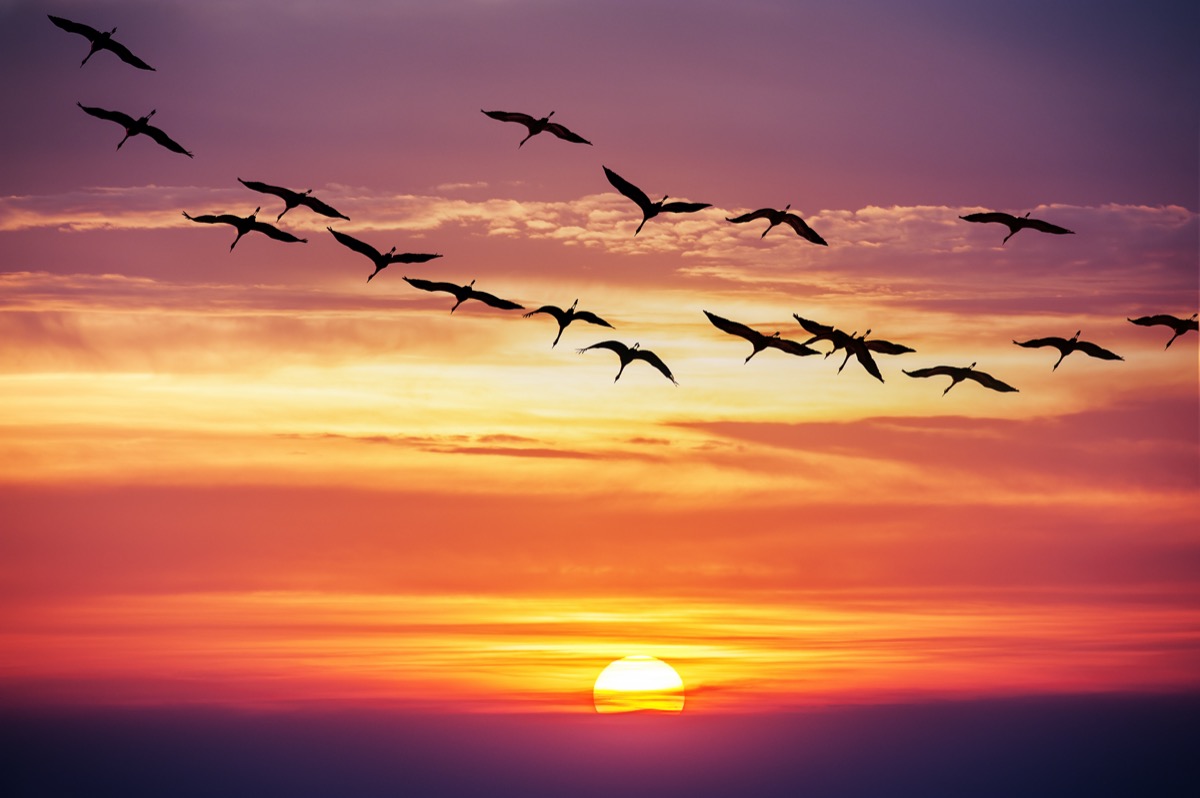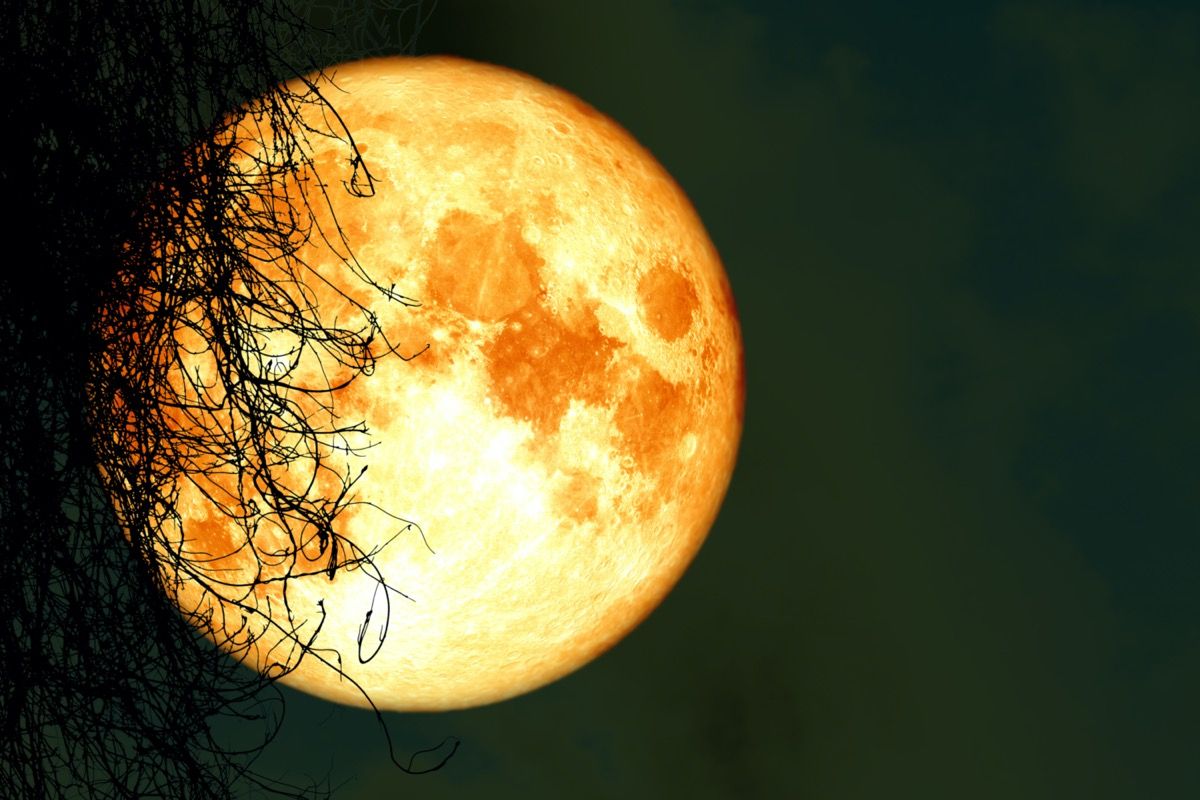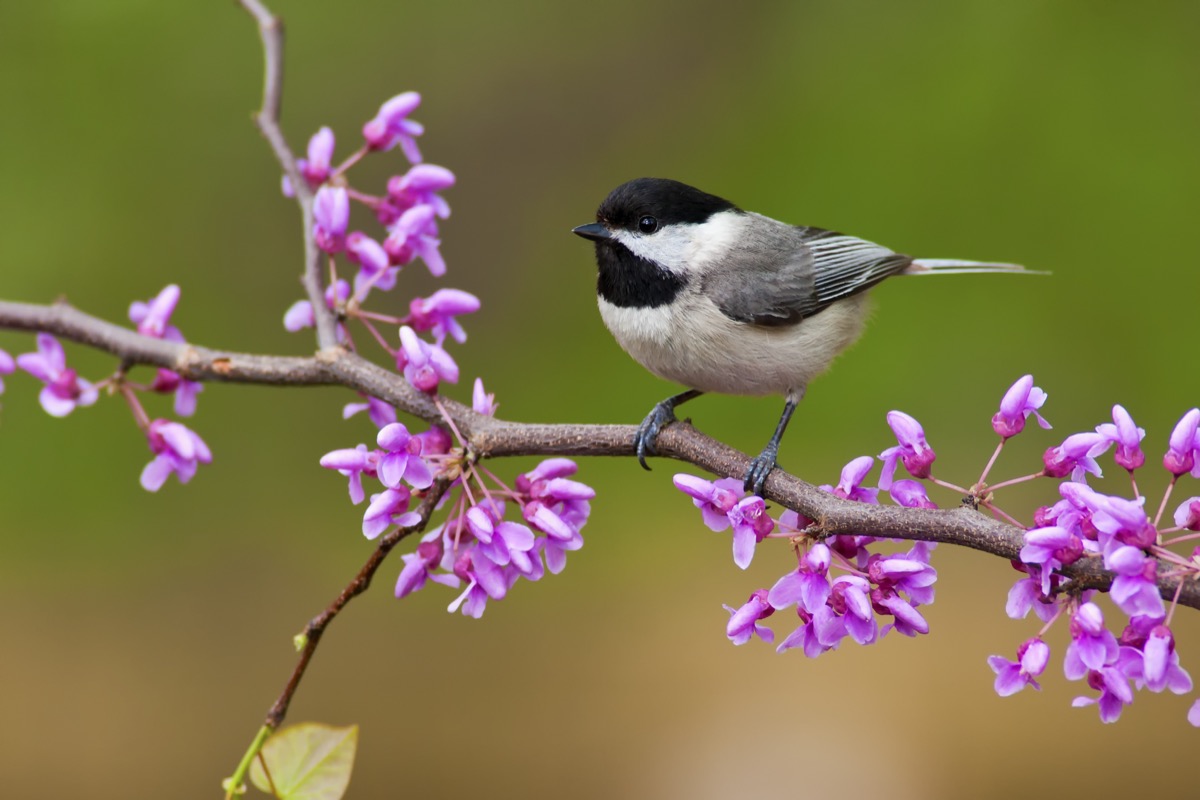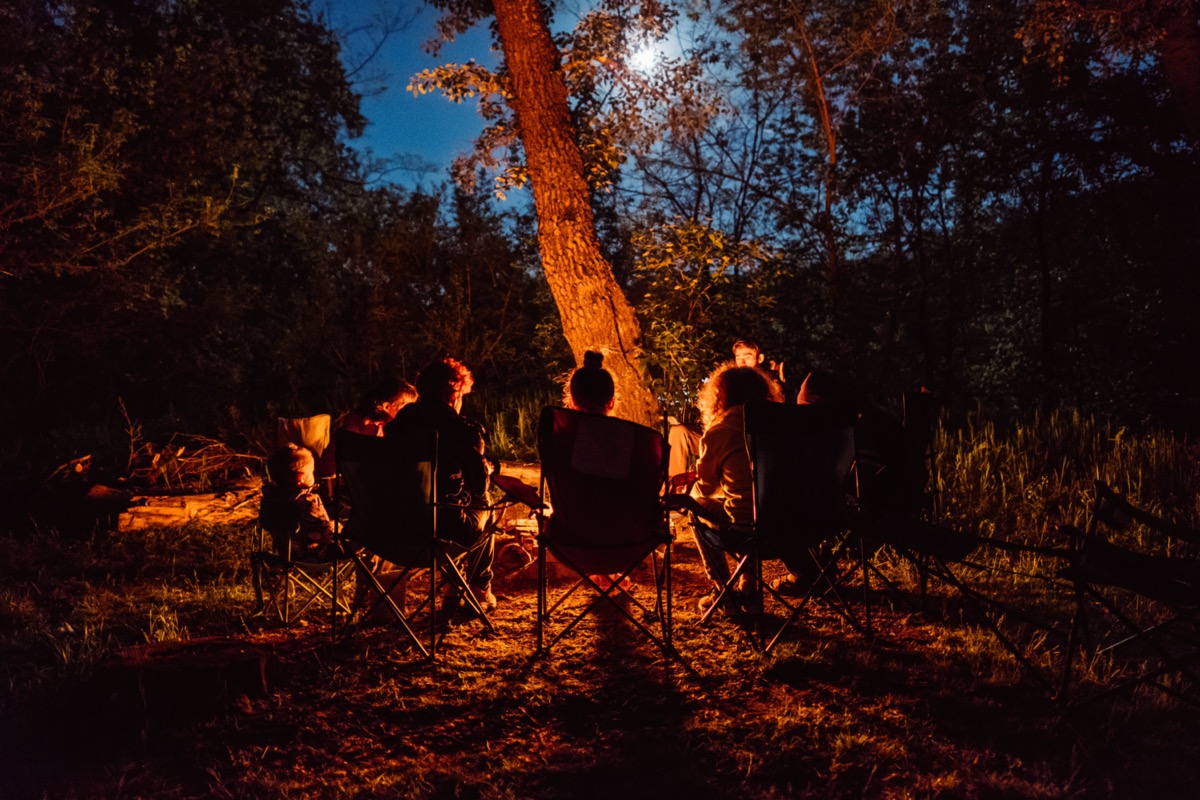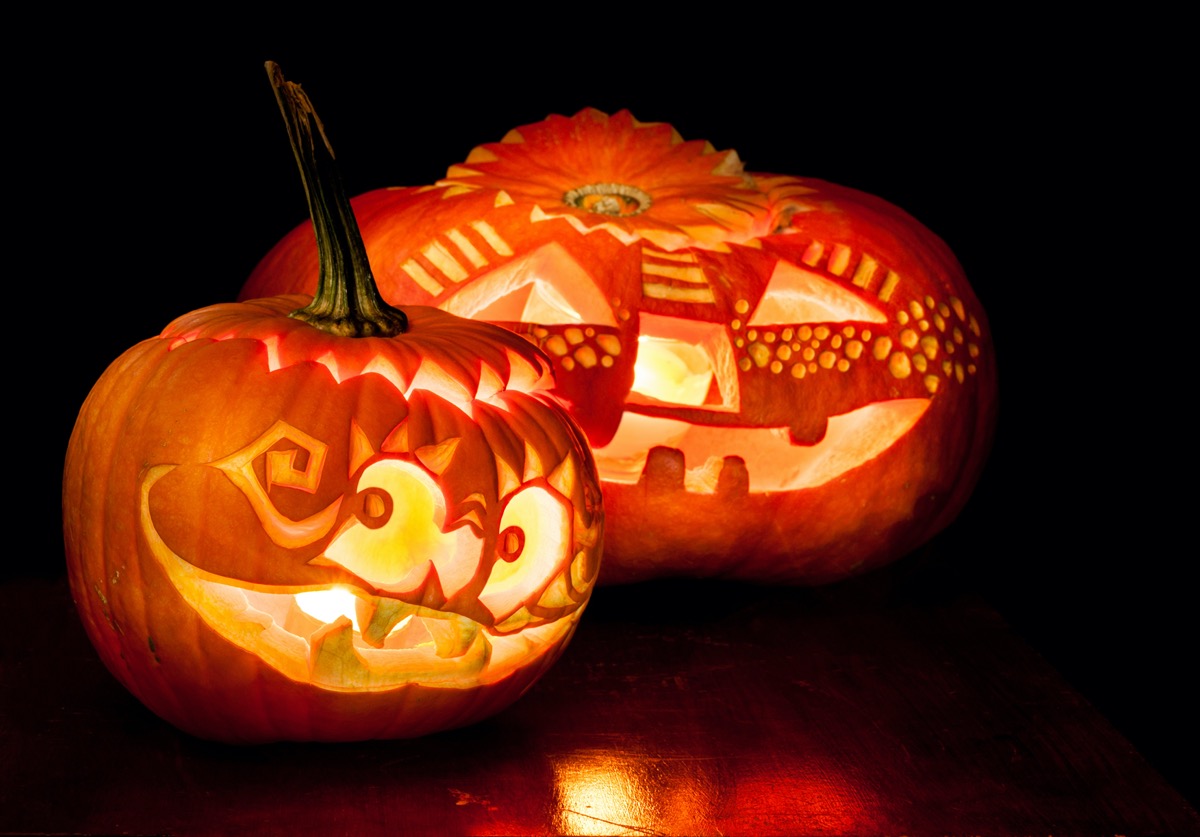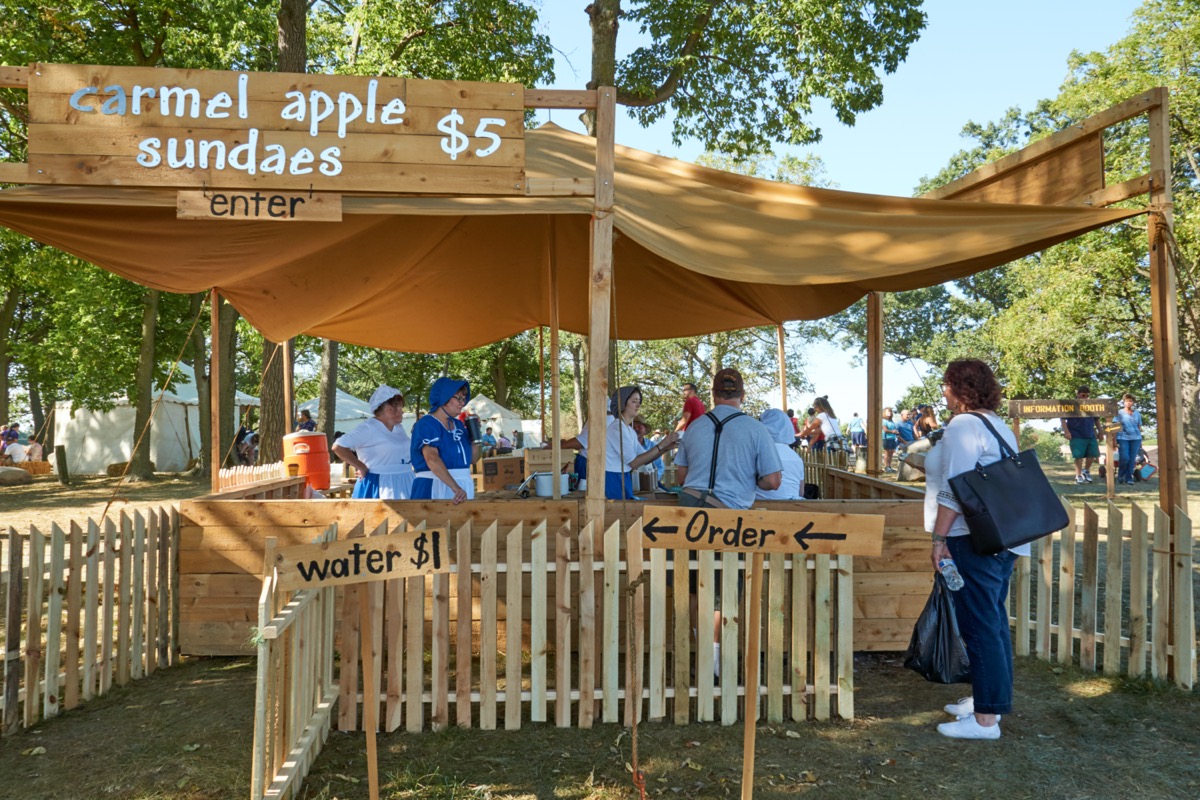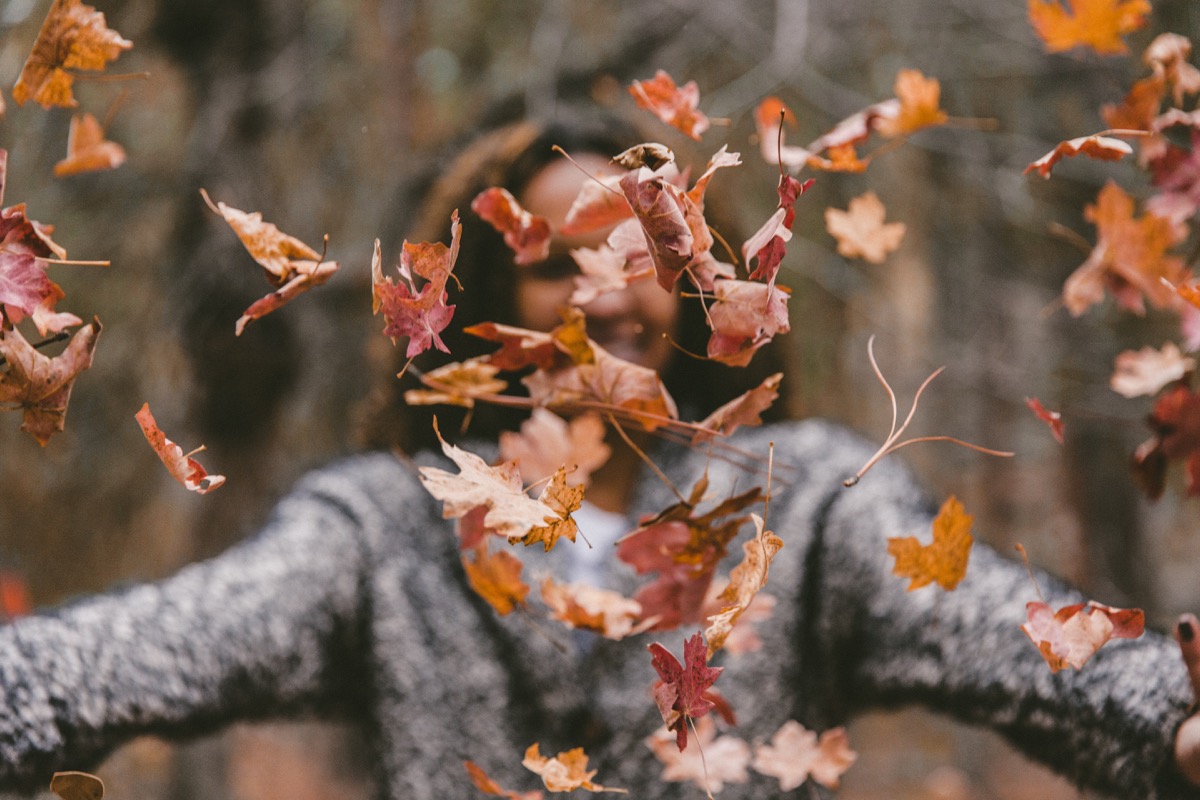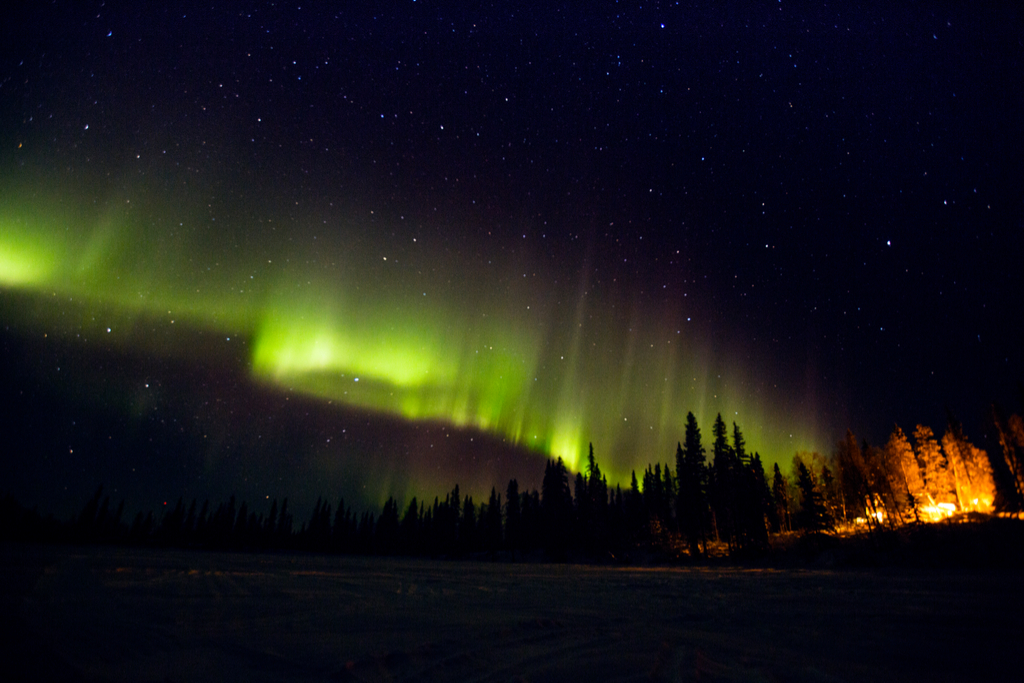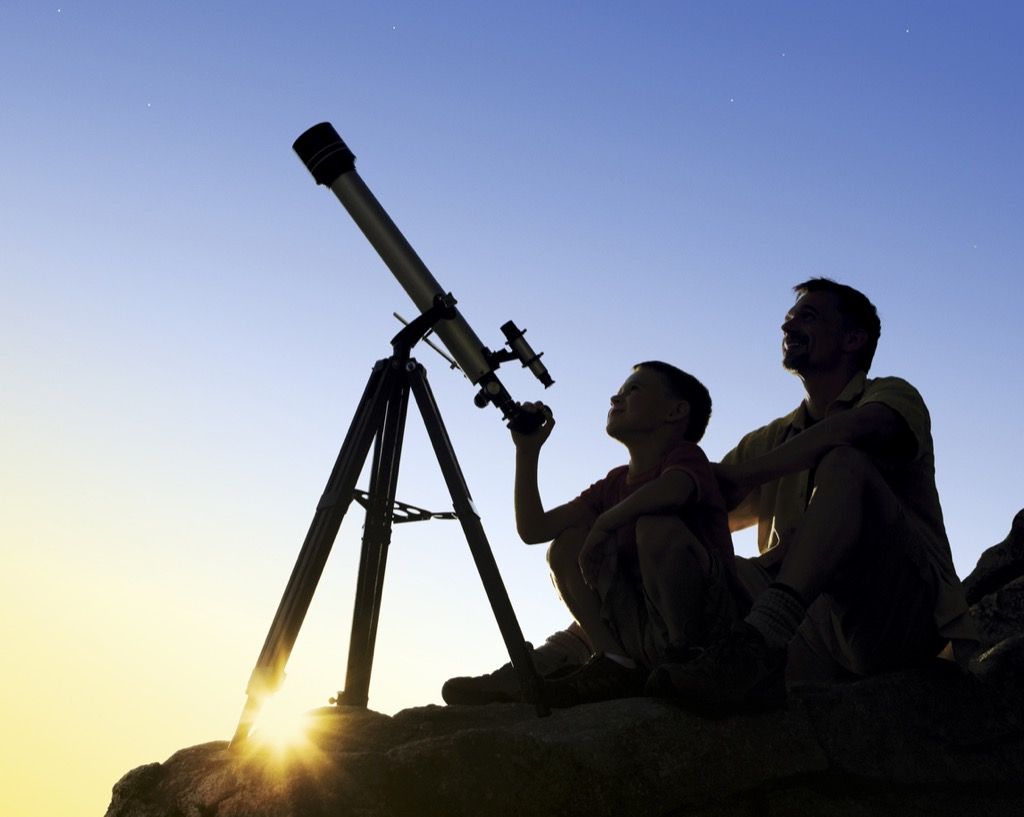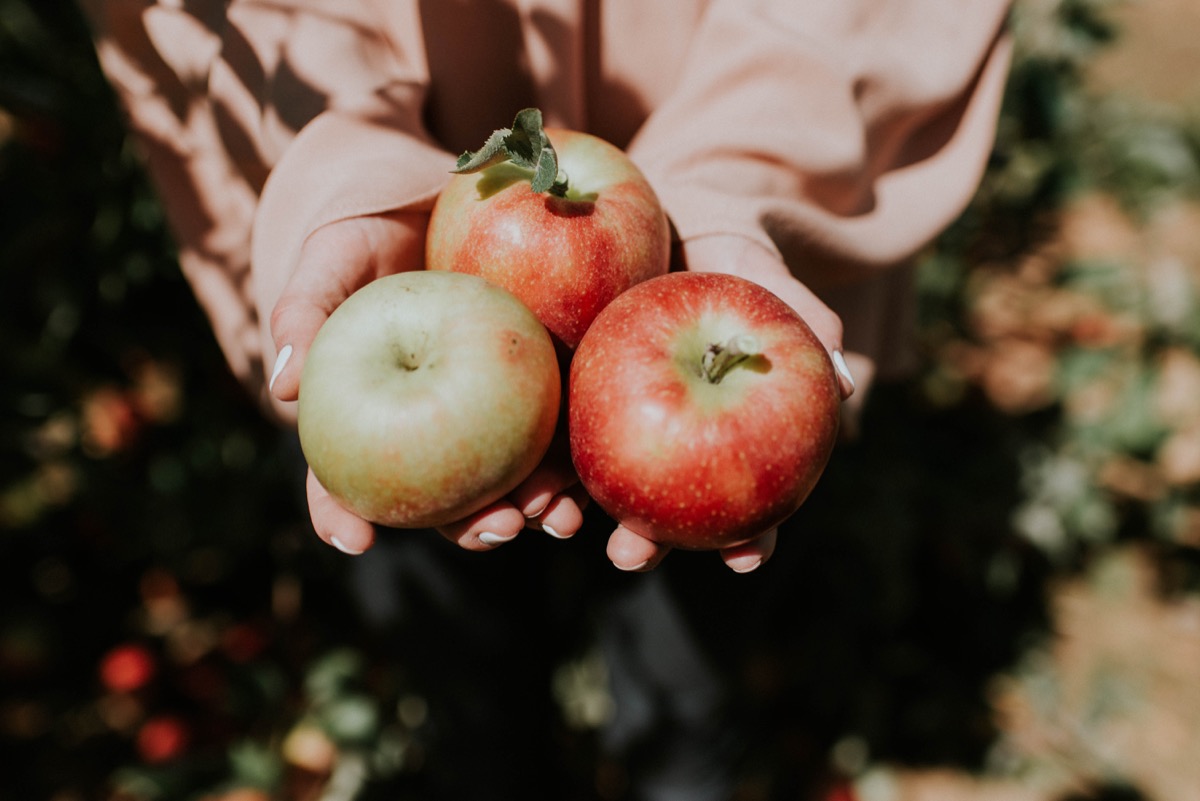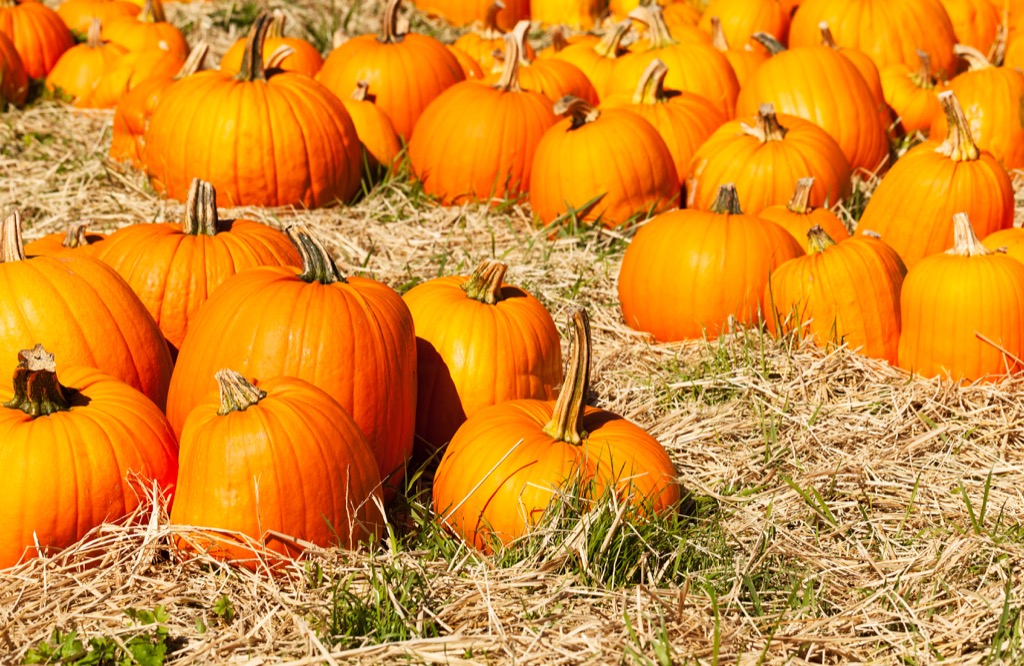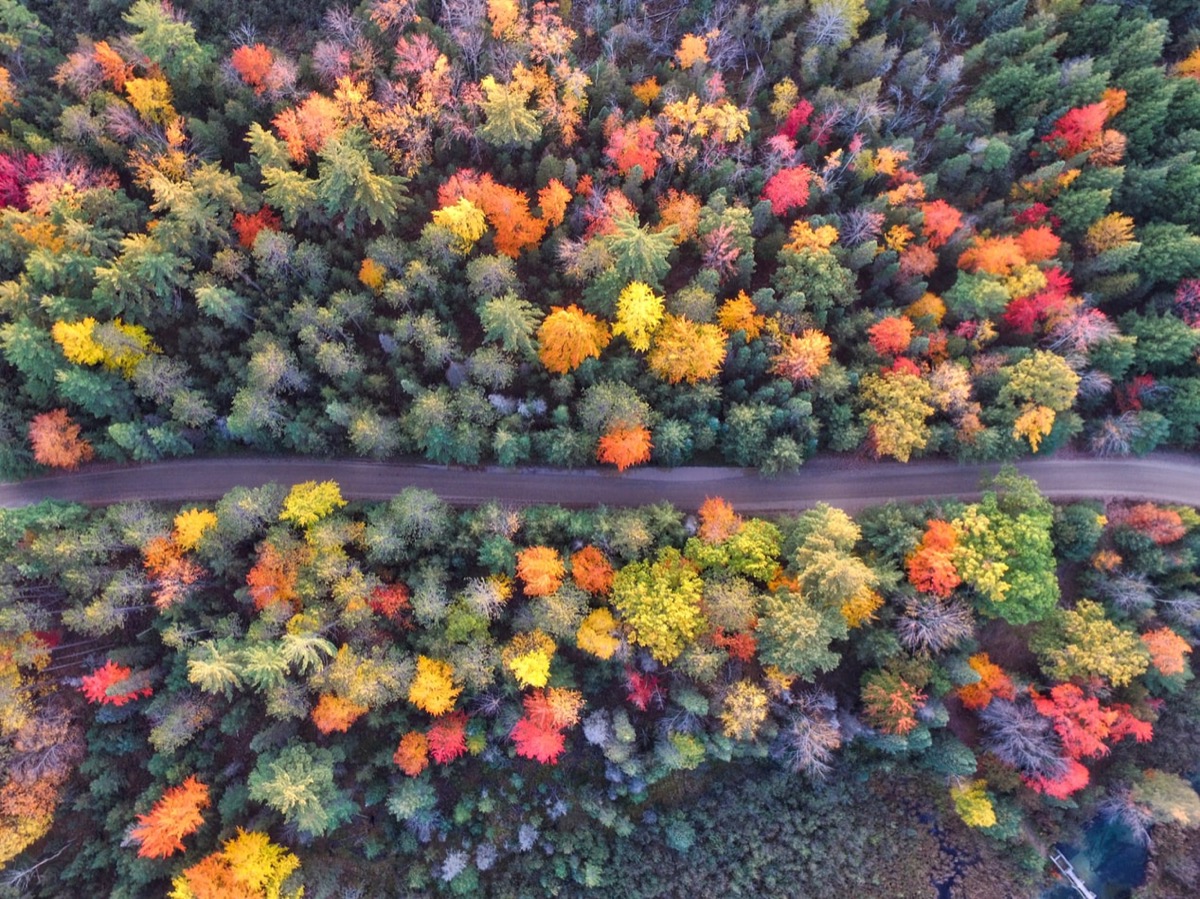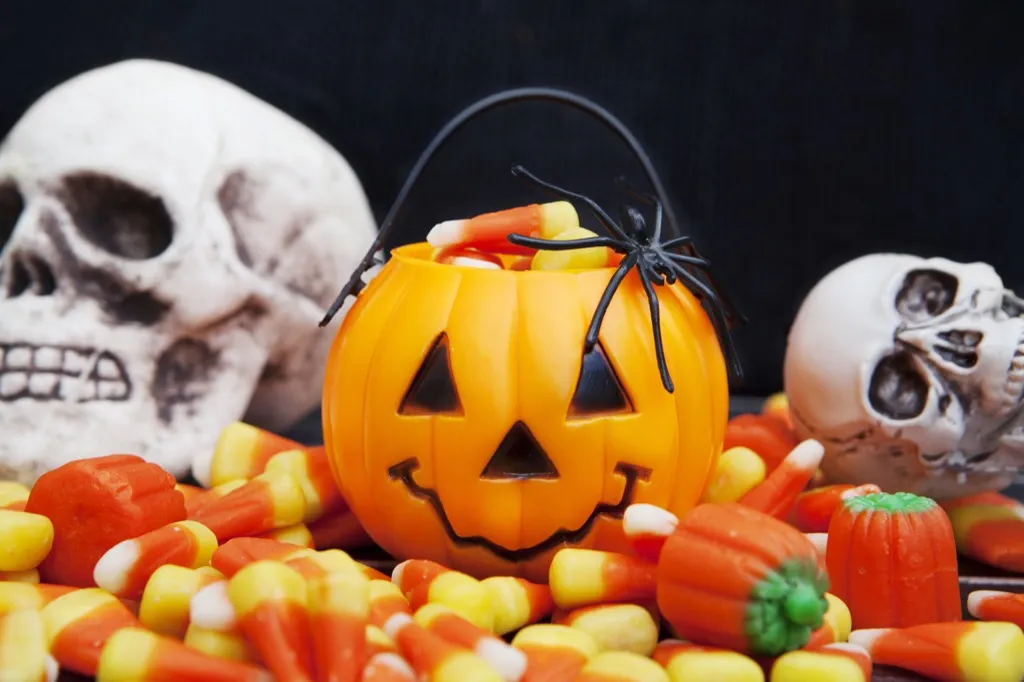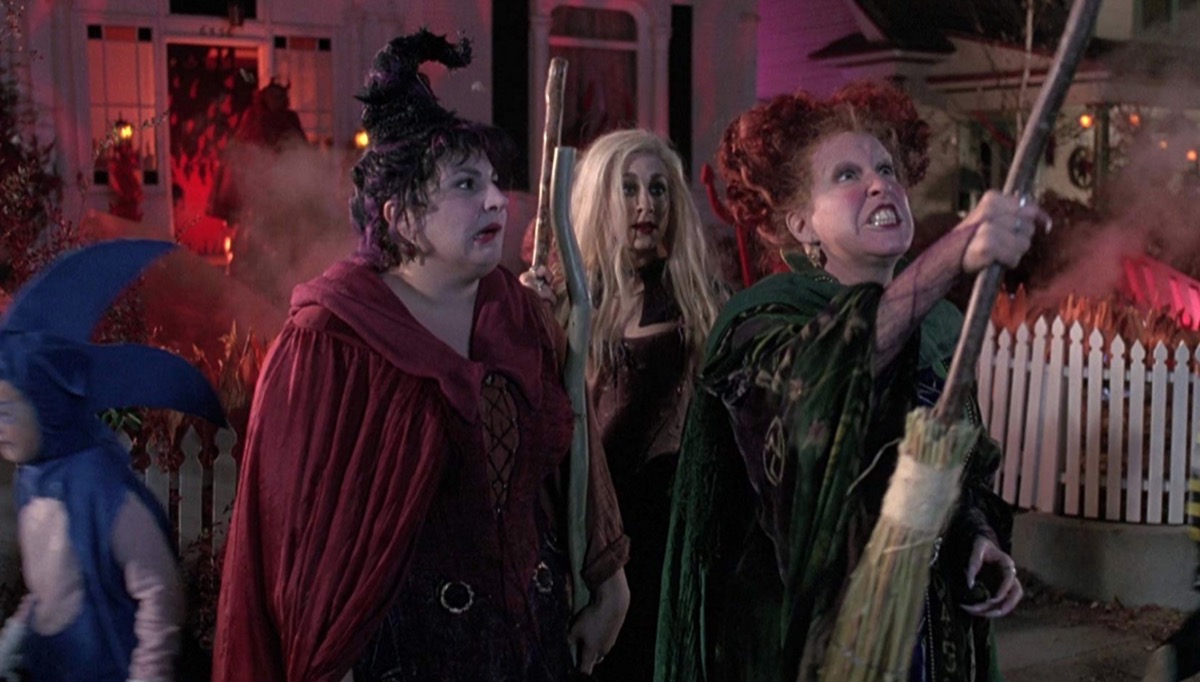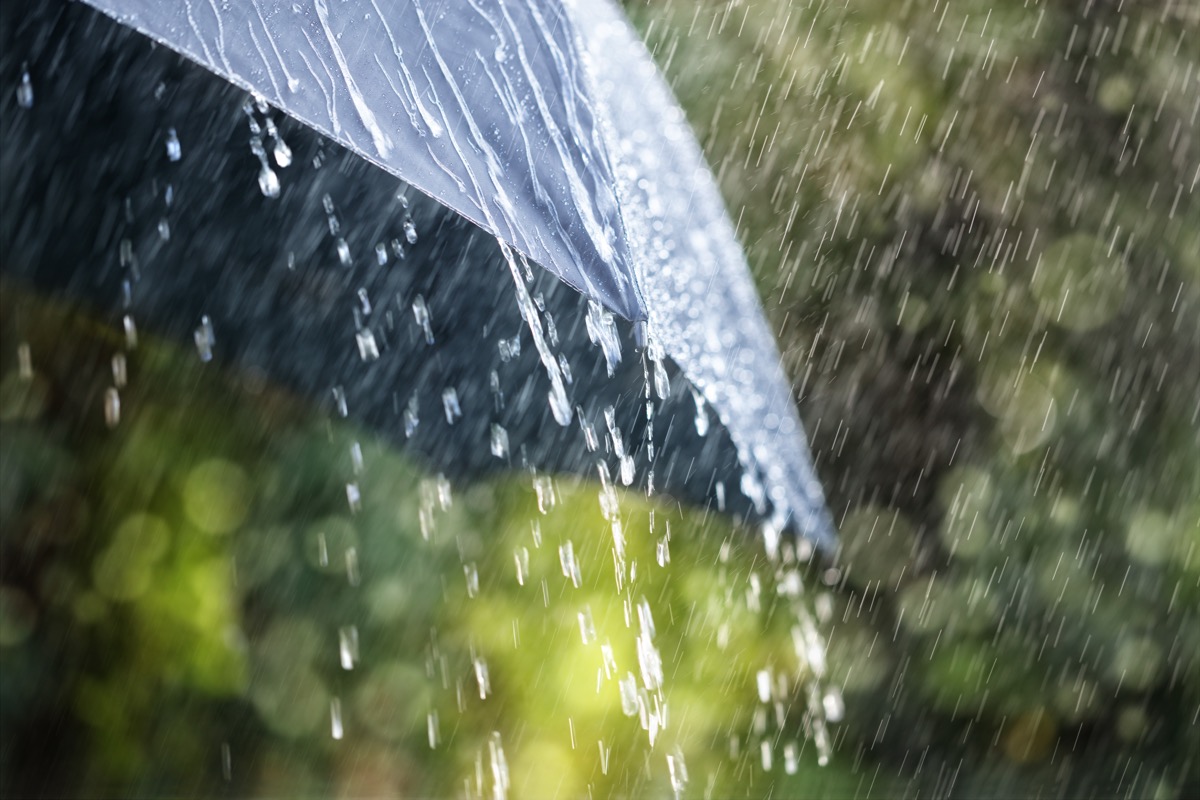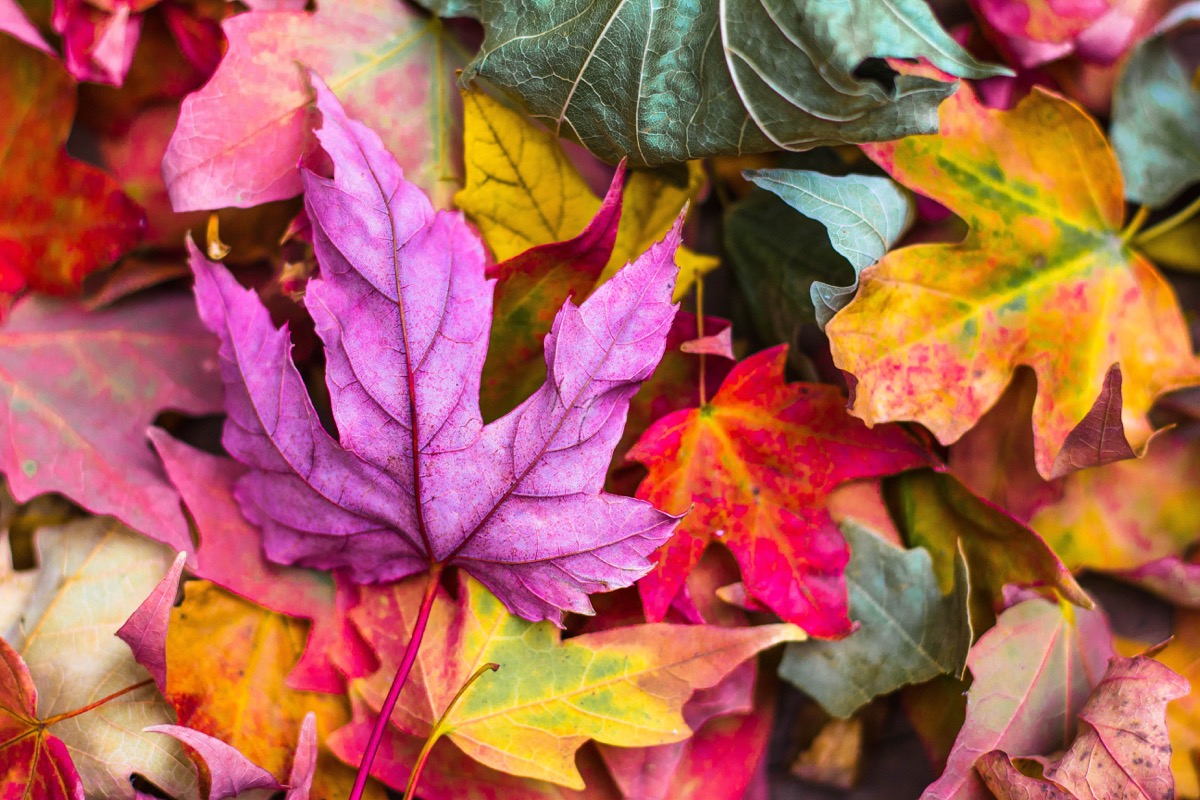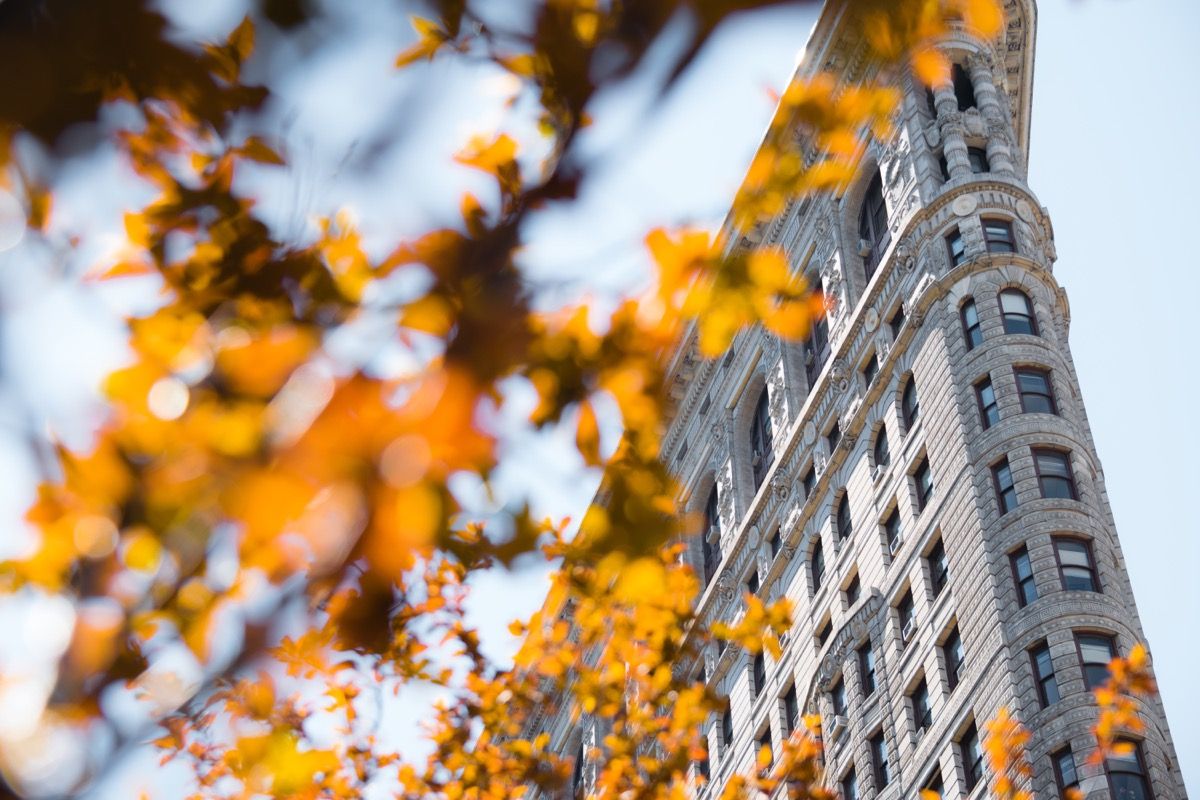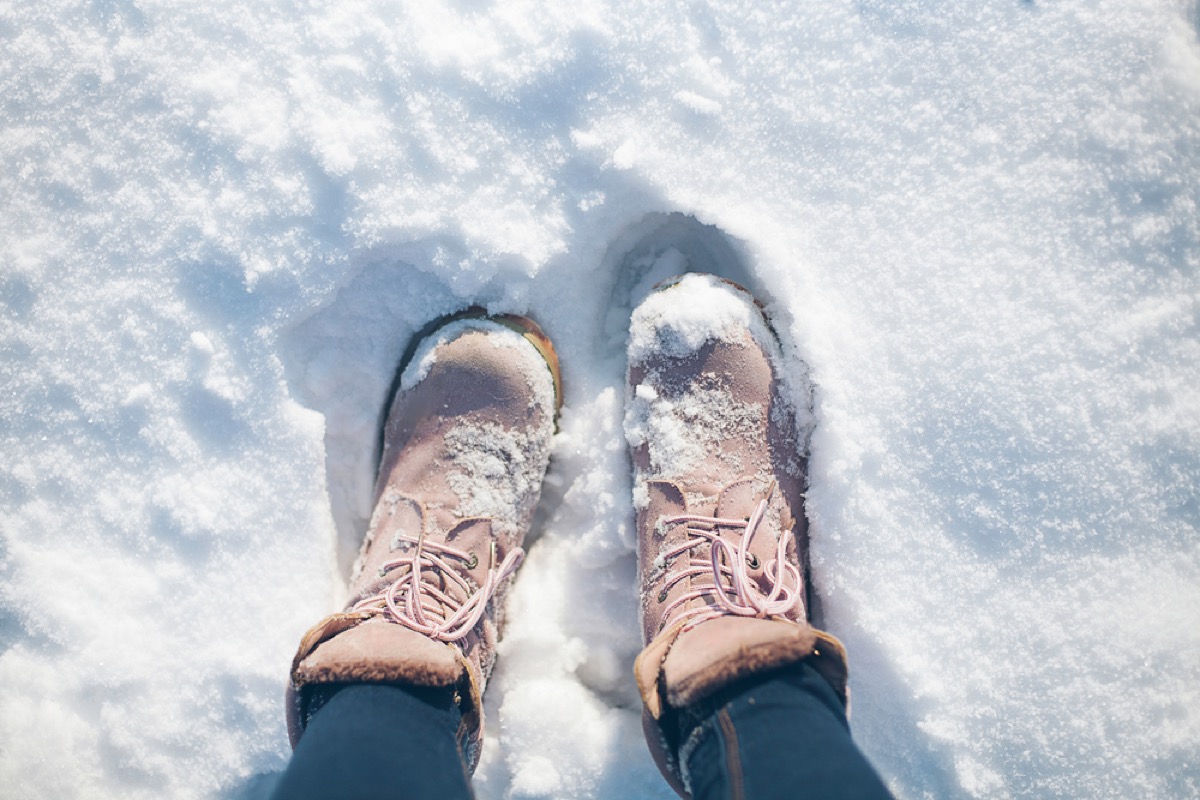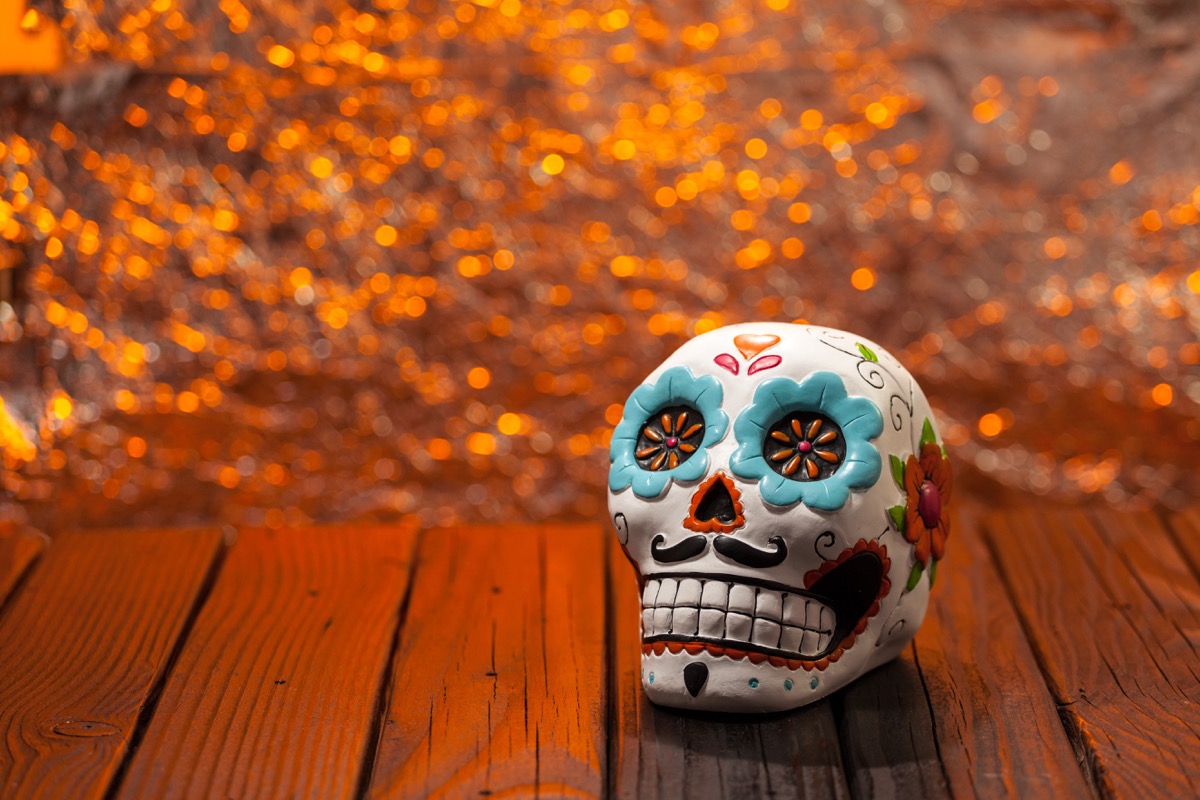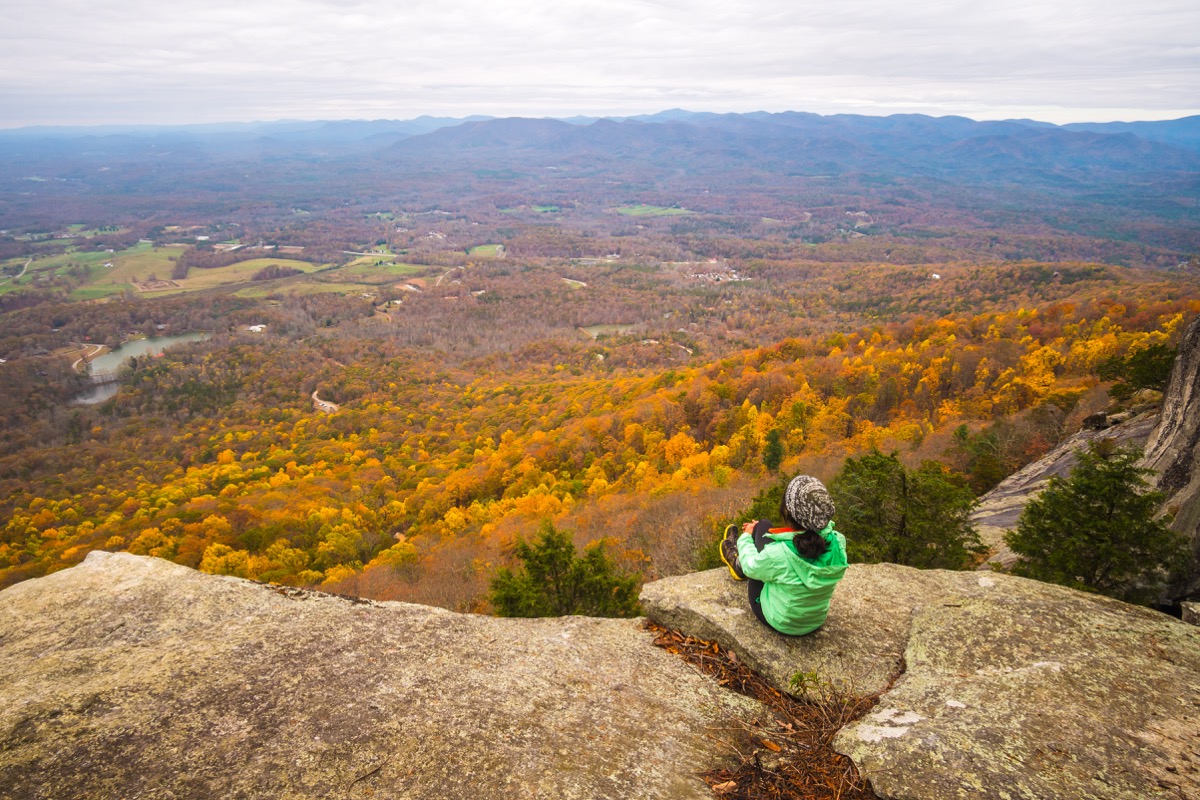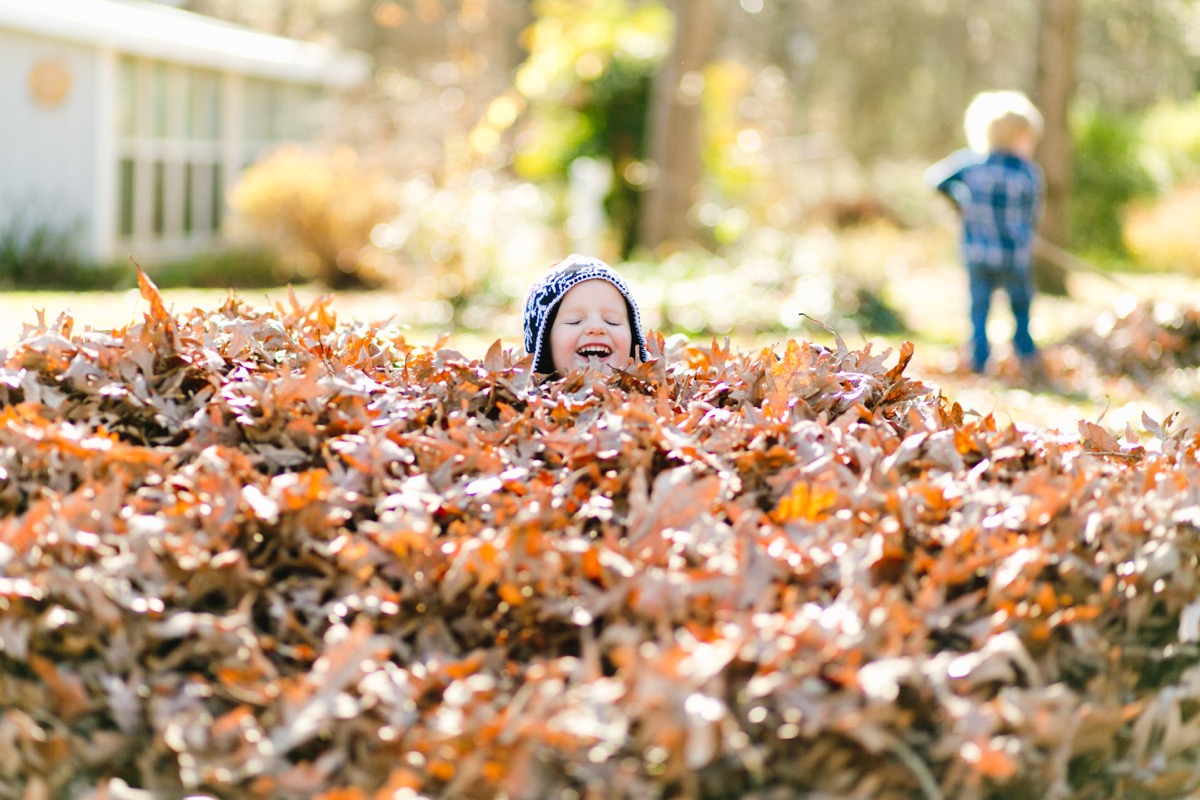All those falling leaves don’t just look beautiful, they may also bring you good luck. That is, if you’re a superstitious person. According to The Encyclopedia of Superstitions, there’s a popular belief that “as many falling leaves as can be caught in the hand in autumn, so many happy months will follow.” Children’s author Alison Uttley writes in her memoir A Year in the Country, “We try to catch a dancing leaf, for every leaf caught is a ‘happy day.’” Whatever the actual timeline, we could all use a little bit more luck. And for fall fashions for guys, here are 17 Style Essentials Every Man Needs for Fall, According to Stylists. The fall is when birth rates are at their highest, so you can expect to see an increase in newborn baby pics filling your feed. But according to Facebook’s own data, it’s also the time of year when a higher number of singles update their status to “in a relationship” or “engaged” compared to the yearly average. The fall is when many bird species make their way to the warmer climes south in preparation for the chilly winter months. While each species follows its own particular path, there are a few popular “flyways” where bird watchers are likely to catch a few flocks on their annual trip. Audubon editor Kenn Kaufman offers seven such hot spots for birds escaping the cold, including Great Salt Lake, Utah (where half a million Wilson’s phalaropes and 1.5 million eared grebes stop to snack on brine shrimp before moving on) or Cape May, New Jersey (where “warblers and other warm-weather songbirds peak in September”). For more trivia that will impress your friends, check out 50 Totally Amazing Facts We Learned from Snapple Bottle Caps. In a study published in the 2008 issue of Perception, researchers discovered that men found women more attractive during cooler months than warmer ones, likely due to the “contrast effect.” This theory holds that since men see more of women’s bodies during the warmer months of the year, it takes less stimuli to catch their attention once the weather causes them to start layering up. The full moon that occurs during autumn equinox, when the Earth’s equator most closely lines up with the sun’s center, is noticeably brighter and rises earlier than a typical full moon. Appearing some time in September or October, this harvest moon can appear almost orange (usually when it’s closest to the horizon), a bit like a giant pumpkin in the sky—very seasonally appropriate! This bright, early moonlight has long been helpful to farmers as they harvest summer crops, hence the name. To learn more about the world around you, check out 125 Facts That Will Make You Feel Instantly Smarter. The fall has some odd effects on animals. For the adorably tiny black-capped chickadee, this season causes its hippocampus—the part of the brain that handles spatial organization and memory—to swell about 30 percent. According to Colin Saldanha, assistant professor of biological sciences at Lehigh University, all these new nerve cells help it to collect and hide massive amounts of seeds, that it will rely on during the barren winter months. “Our hypothesis is that this exaggerated growth occurs when the birds need it the most,” he told Science Daily at the time his findings were announced. While scientists tell us that fall occurs when the Earth tilts away from the Sun, the ancient Greeks had a much cooler explanation. According to Greek legend, the season is caused by Persephone’s return to the underworld, where she rules as Hades’ queen. Her mother, Demeter, the goddess of fertility and harvest, is so upset that she allows the planet’s crops to wither—until Persephone’s return in the spring. For more bits of info that will impress at dinner parties, check out 100 Mind-Blowing Facts You’ve Never Heard Before. Drawing on a massive study from Bristol University on the health development of more than 14,000 children born during the 1990s, researchers reported in the British Medical Journal that children delivered in the autumn and winter months were nine percent more active than the average. The study’s lead author suggested to The Guardian that the timing may relate to when autumn-born children begin school: “If you’re born later in the school year, you’re likely to be smaller than your peers and that could disadvantage you in sports and other activities, such as playing,” Calum Mattocks said. According to a 2012 study published in the Journal of Consumer Research, both men and women are more interested in watching romantic movies during the fall than at any other time of the year. The researchers chalk it up to the fact “that physical coldness activates a need for psychological warmth, which in turn leads to an increased liking for romance movies.” And for more facts delivered right to your inbox, sign up for our daily newsletter. While you might say that a scare “almost gave me a heart attack,” the opposite may be true. Some medical professionals believe that an innocent scare now and then (say while visiting a haunted house or watching a scary movie) can, in fact, promote heart health. Michael Castine, cardiologist at Ochsner Medical Center, explained in a blog post that when scared, a person’s adrenaline triggers the blood vessels to contract and re-direct blood toward the heart and lungs, in a “flight or fight” response. The result? “This can train your heart to pump more blood with every stroke—increasing your cardiac output up to eight times its resting capacity,” Castine explained. Pumpkin pie or apple pie may be the first autumn-appropriate desserts that come to mind when you planning how to cap off a meal. But fall is also the ideal time to whip up some cobbler. Cobbler, made by putting a sweet fruit filling of apple, apricot or another fall fruit into a baking dish, topping with delicious batter, and baking to crisp perfection (then topping with a scoop of ice cream, of course) is one of the best ways to warm up in the fall. While some love camping in the summer, the fall, when leaves are changing color and the air is a bit crisper, is arguably the best time to get out in nature, kick up your heels, and keep warm by the light of the campfire. With Halloween approaching, it’s also arguably the best time for spinning some spooky campfire stories. This is the only time of year that you’re likely to see a jack-o-lantern, and fans of this craft have been treated to some increasingly elaborate designs in recent years. Carvers have turned his casual activity into a kind of folk art, and you may not have to travel farther than down the street to see some truly incredible pieces.ae0fcc31ae342fd3a1346ebb1f342fcb You’ve probably heard the story of the dude who walked through large swaths of the American Midwest, planting apple trees as he went. But you probably also assumed he was a character out of folklore. In fact, John Chapman was a real person. For decades he made his way from state to state, installing nurseries and fencing them in to protect from livestock, then leaving them in the care of locals. Chapman’s generous personality and peculiar preference for sleeping outside helped him become a figure of fascination to many (and the theme of many fall festivals). After his death, his legacy took on mythic proportions, but in life, he was just a guy who really liked planting stuff. You’ve no doubt heard the expression that “an apple a day keeps the doctor away.” The fact is, it kind of does. Apples boast a ton of health benefits, from encouraging weight loss to lowering your risk of diabetes to helping your heart and brain. So embrace the fall season by adding a daily apple to your diet.
If you were born in the fall, you have a better chance of celebrating your 100th birthday than those who were born in any other season. In a 2011 study published in the Journal of Aging Research, researchers analyzed the birth months of 1,574 American centenarians and compared them to the birth months of their shorter-lived siblings. The data showed that people born between September and November were more likely to become centenarians. The good news is a proportionately high number of us have a chance of making it to the big 1-0-0 because September is the most common birth month. Specifically, September 9th is the most common birthday for those born between 1994 and 2014. For people born between 1973 and 1999, the most common birthday is September 16th, according to The New York Times.
Whether you can describe it or not, everyone knows fall has a distinct scent. And, according to meteorologist Matthew Cappucci, the smell is partially due to the leaves. “When the leaves fall, they die,” he wrote for The Washington Post. “As they take their last breath, they ’exhale’ all sorts of gases.” Cappucci says those gasses smell “a bit like chlorine or the exhaust of a dryer vent.” Smell is also linked to the stimulation of a nerve in your brain called the trigeminal nerve, which is responsible for the sensations in your face, including your nose. When you breathe in, that nerve gets turned on, which is why your brain associates the cooler air with a “scent.” The Northern Lights are a spectacular sight, but this natural phenomenon is particularly special in the fall. And that’s thanks to the autumnal equinox, when the sun crosses the Earth’s equator line. “This process only happens when the solar wind’s magnetic field is facing southward relative to the Earth, and because of the way the Earth is tilted, that’s more likely at equinoxes,” Dr. Melanie Windridge, author of Aurora: In Search of the Northern Lights, told Travel & Leisure. “There’s basically more chance of getting a good connection between the solar wind and Earth during the equinoxes.” According to earthsky.org, Mercury is visible at dusk throughout September, along with Jupiter and Saturn. The farther north you are, however, the more difficult it will be to see it.
Daylight saving time (DST) may be difficult to adjust to, but it could be a major bonus for your physical health. A 2008 study published in the New England Journal of Medicine found that the rate of heart attacks fell on the Monday after the end of DST in the fall. On the flip side, heart attacks spiked during the three days following DST’s start in the spring.
If you’re not already in a relationship, then you might want to look for a significant other during autumn, which is otherwise known as cuffing season. Vogue explains that “cuffing season is actually the period of time between fall and the dead of winter when people start searching for someone with whom they can spend the those long, frigid months.” And, according to dating apps, it’s totally real! The data experts at Thinknum Media analyzed numbers from Tinder, Match, OkCupid, and Meetic and found that each year, there’s a “notable jump in active users starting right after Thanksgiving and into the winter months.”
Fall is the time to get frisky! Turns out, people tend to naturally be in the mood to get a little closer in the autumn. “Human physiology indicates that we are also seasonal breeders,” evolutionary psychologist Nigel Barber, PhD, wrote on Psychology Today. “Sex hormones, including testosterone, peak in the fall and are at their lowest in the summer.”
Sure, summer is great for its strawberries, cucumbers, and melon. But fall brings with it a whole new set of seasonal fruits and vegetables. According to Eat This, Not That, you’ll want to indulge in apples, pears, squash, pumpkins, sweet potatoes, turnips, and more in autumn. Mmm, we can practically taste them already!
When you go apple picking, you probably notice that the apples are organized by type. And while we’re sure your local orchard has a wide variety of the fruits, it’s probably nothing compared to the total number of apple varieties worldwide. According to the University of Illinois, there are 7,500 varieties of apples in the world and 2,500 varieties in the United States.
No matter where you are in the world, you’ll be able to find a pumpkin (unless you plan to visit Antarctica). According to National Geographic, these squash grow on every single continent except the southernmost one. The top producers of pumpkins include China, India, Ukraine, the United States, Egypt, and Mexico. And, fun fact, the top pumpkin-producing U.S. state is Illinois. Pumpkin pie is more than just a pleasant reminder of autumn—it’s also an aphrodisiac. In a landmark 1995 study, researchers at the Smell and Taste Treatment and Research Foundation set out to discover which scents aroused men the most. And they found that the smell of pumpkin pie mixed with lavender was the most powerful turn-on, increasing penile blood flow by an average of 40 percent.
Even the biggest dessert fan wouldn’t have been a match for the largest pumpkin pie ever created. According to Guinness World Records, the pie measured 20 feet in diameter, weighed 3,699 pounds, and required 440 sheets of dough. It was made by the New Bremen Giant Pumpkin Growers in Ohio in September 2010. Fall is the perfect time to sit down with a hot bowl of soup. Frankly, so many people enjoy broths, bisques, and hearty stews, that by the year 2025, it’s forecasted that the soup industry in the United States will be valued at $7.7 billion dollars.
Money really does grow on trees—at least in New England, that is. In 2014, the six-state region comprised of Maine, Vermont, New Hampshire, Massachusetts, Rhode Island, and Connecticut expected $3 billion in tourism income from fall foliage, according to Skift. In most parts of the region, peak foliage spectating comes around mid-October. But if you want a spot-on prediction of when the leaves change color in a particular state or city, check out this interactive map put out each year by the Great Smoky Mountains National Park.
If you find yourself in the area of Glens Falls, New York, during the month of September, then be sure to check out the Adirondack Balloon Festival. A celebration of the season, the event features hot air balloon trips that give riders the chance to see the stunning fall foliage from the sky above. Birds aren’t the only creatures that head south for the winter. During the fall, butterflies start out on an epic 3,000-mile journey from the northeastern U.S. and Canada to their winter home in southwestern Mexico. To stay warm, the butterflies cluster together. According to the U.S. Forest Service, tens of thousands of them can cluster into a single tree. It’s a sight you’d have to see to believe!
Throughout the fall, squirrels spend their days collecting and “caching” nuts, meaning they hide the tasty treasures away in spots where they hope to find them later. “You’ll see them collecting stuff and running and frantically digging,” York University professor Suzanne MacDonald told National Geographic. But that’s not all. One 1998 study by the University of Richmond found that squirrels fail to recover up to 74 percent of the nuts they bury, which is likely responsible for oak forest regeneration. Thanks, forgetful squirrels!
You might think that as soon as a few leaves fall down, you’ve got to get outside and rake them up. But that’s actually not the case. In reality, those leaves insulate the seeds in the ground below and provide them with nutrients as they break down and decay. “Rake leaves off the lawn, but there’s no need to remove them under trees and shrubs or in perennial beds” plant expert Sharon Yiesla told the Chicago Tribune. “They’ll make a great winter mulch!” Not to mention, they’re free!
Pumpkin spice lattes may be one of the most highly anticipated fall delicacies, but there are plenty of other products that incorporate the wildly popular flavor. For example, you can get everything from pumpkin spice English muffins and pumpkin spice air fresheners to pumpkin spice Jell-O and pumpkin spice beard oil. Honestly, we’d be impressed if you found a product that didn’t come in pumpkin spice! If pumpkin spiced lattes aren’t quite your thing, then perhaps you prefer apple cider. And if that’s the case, then you should head to New Hampshire, where the cozy drink is the official state beverage. Oddly enough, New Hampshire is hardly a heavy hitter when it comes to apple production. According to USApple, the top apple-producing states are Washington, New York, Michigan, Pennsylvania, California, Virginia, North Carolina, Oregon, Ohio, and Idaho.
If you enjoy pouring a thick layer of maple syrup onto your pancakes, waffles, or anything else (we’re not here to judge), then you’re certainly not alone. Thankfully, those responsible for providing diners with the sticky sweet stuff are keeping up with demand. According to numbers from the National Agricultural Statistics Service, the United States produces more than 4.27 million gallons of maple syrup each year. Vermont leads the pack; the state produced some 1.98 million gallons in 2017.
Autumn brings tons of seasonal treats (we’re looking at you, apple cider donuts!). But in Japan, you can essentially taste the season itself by nibbling on crispy tempura-fried maple leaves. The delicacy is called momiji and it’s typically served in Minoh City, Osaka.
We Americans love our candy. And on Halloween, we spend an estimated $9 billion on it. In fact, according to Vox, “If you took all the candy that’s sold during Halloween week and turned it into a giant ball … it’d be as large as six Titanics and weigh 300,000 tons.” All told, our Halloween buys make up 8 percent of all yearly candy sales.
Sure, Halloween is only one night—but that doesn’t mean you have to wait until October 31st to get into the spooky spirit. Thanks to Freeform’s “31 Nights of Halloween,” you can watch your favorite spooky movies every single night leading up to Halloween. Starting on Oct. 1, you’ll be able to indulge in classics like The Nightmare Before Christmas, Ghostbusters, Adams Family Values, Hocus Pocus, and many more.
Fall doesn’t always have to be about watching trees—you can also paint them. If inspiration strikes, check out Bob Ross The Joy of Painting series on IMDBTV. Spend a little (or a lot) of time learning how to turn dabs of paint into mountaintops, lakes, and “happy little trees.” Head to Stowe, Vermont, at the end of September to attend the annual Pumpkin Chuckin’ Festival, an event that centers around using a trebuchet (a massive catapult-like machine) to launch pumpkins as far as possible. The event was named the Best Fall Festival of 2019 by a panel of experts and readers at USA Today. Fall is the season for everything spooky—and that includes gloriously gory zombie walks, which feature participants who dress up like the living dead and roam around town just like they do on The Walking Dead. The largest gathering of zombies ever included 15,458 folks and took place in Minneapolis on October 11, 2014.
If you can’t make it to Munich for the original event, then you might want to head to the second largest Oktoberfest in the world, which takes place in Kitchener, Ontario. The city is about an hour outside of Toronto and was once called Berlin, thanks to its rich German history. Nowadays, Kitchener still honors its past by holding an annual Oktoberfest, which hosts some 700,000 visitors who consume more than 50,000 sausages and 25,000 pretzels each year.
The smell of the first rain in the fall is one of the most satisfying scents in the world. It’s so special, in fact, there’s a specific word for it. According to Merriam-Webster, petrichor is “a distinctive, earthy, usually pleasant odor that is associated with rainfall especially when following a warm, dry period and that arises from a combination of volatile plant oils and geosmin released from the soil into the air and by ozone carried by downdrafts.” Now you know!
As Merriam Webster also notes, the words fall and autumn can be “used interchangeably” when talking about the time “between summer and winter,” although “autumn is considered the more formal name.” In addition, the expert wordsmiths explain that while both words originated in Britain, fall—which comes from the phrase “the fall of the leaves”—is used more frequently in American English. The sound of leaves and trees rustling in the wind is one of the most satisfying noises of the season. And the next time you hear it, you’ll know it has a name: psithurism, which comes from the Greek word psithuros, meaning whispering (the s is silent).
Fall is a beautiful time to travel—and it’s also cheap. According to CNN Travel, “One of the cheapest times to pack your bags … starts about the same time the final leftovers from Thanksgiving are gobbled up and lasts until just before the airports fill up with Christmas travelers.” Travel Leaders agent Kristy Osborn backs that up, telling the outlet, “We always recommend the three weeks after Thanksgiving. The airports are not crowded, the cruise ships are not full of holiday travelers, and there are no hurricanes.”
There are lots of gift-giving holidays in winter, so it’s extra good news that there are tons of shopping holidays in fall. In addition to those Black Friday and Cyber Monday sales, you can expect major sales on Columbus Day, too. The U.S. News and World Report recommends buying outdoor furniture and grills in September and TVs and electronics in November (watch out for pre-Black Friday sales). You’ll have all your holiday gifts before you know it!
Autumn is the perfect time to learn how to whip up some wooly pieces and help your mental wellbeing in the process. According to a 2014 survey by the Craft Yarn Council, almost 90 percent of knitters and crocheters say that the craft improves their mood, and nine in 10 report that the hobby helps them relax. Eighty-one percent of respondents say knitting decreases stress, and 57 percent say it decreases anxiety.
The football season starts in September, which means that it’s also the time for tailgating. According to numbers collected by CNN, around 18 percent of fans tailgate before games, with 10 percent of those folks not even going to the actual sports event. Is there any other sport where you don’t have to shell out the money to go to the event but can still get in on the action? We think not!
If your favorite part of cooler weather is getting ready for ski season, then take note: Some ski resorts open as early as October. According to Ski.com, resorts in Colorado, Utah, and Maine all have reliable early-season open dates, thanks to their ability to make snow and their routine luck in landing in the path of some early-season storms. Día de los Muertos—or the Day of the Dead—is celebrated on Nov. 2 by people in Mexico, parts of Central and South America, and other members of the American Latinx community. The holiday is an opportunity to honor and celebrate the lives of loved ones who have passed on and includes music and dancing. The calaveritas de azucar, or sugar skulls, that have become ubiquitous with the holiday are left on the altars of children who have passed. According to the Smithsonian Institute, “the skull is used not as a morbid symbol but rather as a whimsical reminder of the cyclicality of life, which is why they are brightly decorated.”
In North America, the autumnal equinox occurs on Sept. 22 or 23, which is why it’s also sometimes referred to as the September equinox. As The Old Farmer’s Almanac explains, “during the equinox, the sun crosses … the ‘celestial equator’—an imaginary extension into space of Earth’s equator line. The equinox occurs precisely when the sun’s center passes through this line. When the sun crosses the equator from north to south, this marks the autumnal equinox; when it crosses from south to north, this marks the vernal equinox.” It’s also the point in the year when the days start to get shorter and the darkness arrives earlier each evening, which is great news for all those monsters lurking in the night this time of year.
Not everyone can appreciate fall because not every place experiences it. According to National Geographic, “places near the equator experience little seasonal variation … They have about the same amount of daylight and darkness throughout the year. These places remain warm year-round. Near the equator, regions typically have alternating rainy and dry seasons.”


